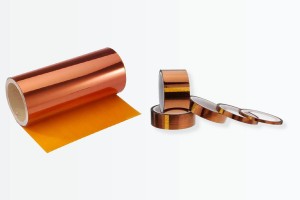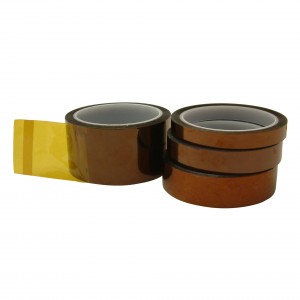Polyimide, the all-rounder in polymer materials, has aroused the interest of many research institutes in China, and some enterprises have also begun to produce – our own polyimide material.
I. Overview
As a special engineering material, polyimide has been widely used in aviation, aerospace, microelectronics, nanometer, liquid crystal, separation membrane, laser and other fields. Recently, countries are listing the research, development and utilization of polyimide as one of the most promising engineering plastics in the 21st century. Polyimide, because of its outstanding characteristics in performance and synthesis, whether it is used as a structural material or as a functional material, its huge application prospects have been fully recognized, and it is known as a “problem-solving expert” ( protion solver), and believes that “without polyimide, there would be no microelectronics technology today”.
Second, the performance of polyimide
1. According to the thermogravimetric analysis of fully aromatic polyimide, its decomposition temperature is generally around 500°C. Polyimide synthesized from biphenyl dianhydride and p-phenylenediamine has a thermal decomposition temperature of 600°C and is one of the most thermally stable polymers so far.
2. Polyimide can withstand extremely low temperature, such as in liquid helium at -269°C, it will not be brittle.
3. Polyimide has excellent mechanical properties. The tensile strength of unfilled plastics is above 100Mpa, the film (Kapton) of homophenylene polyimide is above 170Mpa, and biphenyl type polyimide ( UpilexS) up to 400Mpa. As an engineering plastic, the amount of elastic film is usually 3-4Gpa, and the fiber can reach 200Gpa. According to theoretical calculations, the fiber synthesized by phthalic anhydride and p-phenylenediamine can reach 500Gpa, second only to carbon fiber.
4. Some polyimide varieties are insoluble in organic solvents and stable to dilute acids. General varieties are not resistant to hydrolysis. This seemingly shortcoming makes polyimide different from other high-performance polymers. The characteristic is that the raw material dianhydride and diamine can be recovered by alkaline hydrolysis. For example, for Kapton film, the recovery rate can reach 80%-90%. Changing the structure can also get quite hydrolysis-resistant varieties, such as withstand 120 ° C, 500 hours of boiling.
5. The thermal expansion coefficient of polyimide is 2×10-5-3×10-5℃, Guangcheng thermoplastic polyimide is 3×10-5℃, biphenyl type can reach 10-6℃, individual varieties can be up to 10-7°C.
6. Polyimide has high radiation resistance, and its film has a strength retention rate of 90% after 5×109rad fast electron irradiation.
7. Polyimide has good dielectric properties, with a dielectric constant of about 3.4. By introducing fluorine or dispersing air nanometers in polyimide, the dielectric constant can be reduced to about 2.5. Dielectric loss is 10-3, dielectric strength is 100-300KV/mm, Guangcheng thermoplastic polyimide is 300KV/mm, volume resistance is 1017Ω/cm. These properties remain at a high level over a wide temperature range and frequency range.
8. Polyimide is a self-extinguishing polymer with low smoke rate.
9. Polyimide has very little outgassing under extremely high vacuum.
10. Polyimide is non-toxic, can be used to make tableware and medical appliances, and can withstand thousands of disinfections. Some polyimides also have good biocompatibility, for example, they are non-hemolytic in the blood compatibility test and non-toxic in the in vitro cytotoxicity test.
3. Multiple ways of synthesis:
There are many kinds and forms of polyimide, and there are many ways to synthesize it, so it can be selected according to various application purposes. This kind of flexibility in synthesis is also difficult for other polymers to possess.
1. Polyimide is mainly synthesized from dibasic anhydrides and diamines. These two monomers are combined with many other heterocyclic polymers, such as polybenzimidazole, polybenzimidazole, polybenzothiazole, polyquinone Compared with monomers such as phenoline and polyquinoline, the source of raw materials is wide, and the synthesis is also relatively easy. There are many kinds of dianhydrides and diamines, and polyimides with different properties can be obtained by different combinations.
2. Polyimide can be polycondensed at low temperature by dianhydride and diamine in a polar solvent, such as DMF, DMAC, NMP or THE/methanol mixed solvent, to obtain soluble polyamic acid, after film formation or spinning Heating to about 300°C for dehydration and cyclization into polyimide; acetic anhydride and tertiary amine catalysts can also be added to polyamic acid for chemical dehydration and cyclization to obtain polyimide solution and powder. Diamine and dianhydride can also be heated and polycondensed in a high boiling point solvent, such as a phenolic solvent, to obtain polyimide in one step. In addition, polyimide can also be obtained from the reaction of dibasic acid ester and diamine; it can also be converted from polyamic acid to polyisoimide first, and then to polyimide. These methods all bring convenience to processing. The former is called PMR method, which can obtain low viscosity, high solid solution, and has a window with low melt viscosity during processing, which is especially suitable for the manufacture of composite materials; the latter increases In order to improve the solubility, no low-molecular compounds are released during the conversion process.
3. As long as the purity of dianhydride (or tetraacid) and diamine is qualified, no matter what polycondensation method is used, it is easy to obtain a sufficiently high molecular weight, and the molecular weight can be easily adjusted by adding unit anhydride or unit amine.
4. Polycondensation of dianhydride (or tetraacid) and diamine, as long as the molar ratio reaches an equimolar ratio, heat treatment in vacuum can greatly increase the molecular weight of the solid low molecular weight prepolymer, thereby improving the processing and powder forming. Come conveniently.
5. It is easy to introduce reactive groups at the chain end or chain to form active oligomers, thus obtaining thermosetting polyimide.
6. Utilize the carboxyl group in polyimide to carry out esterification or salt formation, and introduce photosensitive groups or long-chain alkyl groups to obtain amphiphilic polymers, which can be used to obtain photoresists or be used in the preparation of LB films.
7. The general process of synthesizing polyimide does not produce inorganic salts, which is especially beneficial for the preparation of insulating materials.
8. The dianhydride and diamine as monomers are easy to sublimate under high vacuum, so it is easy to form polyimide film on workpieces, especially devices with uneven surfaces, by vapor deposition.
Post time: Feb-06-2023


